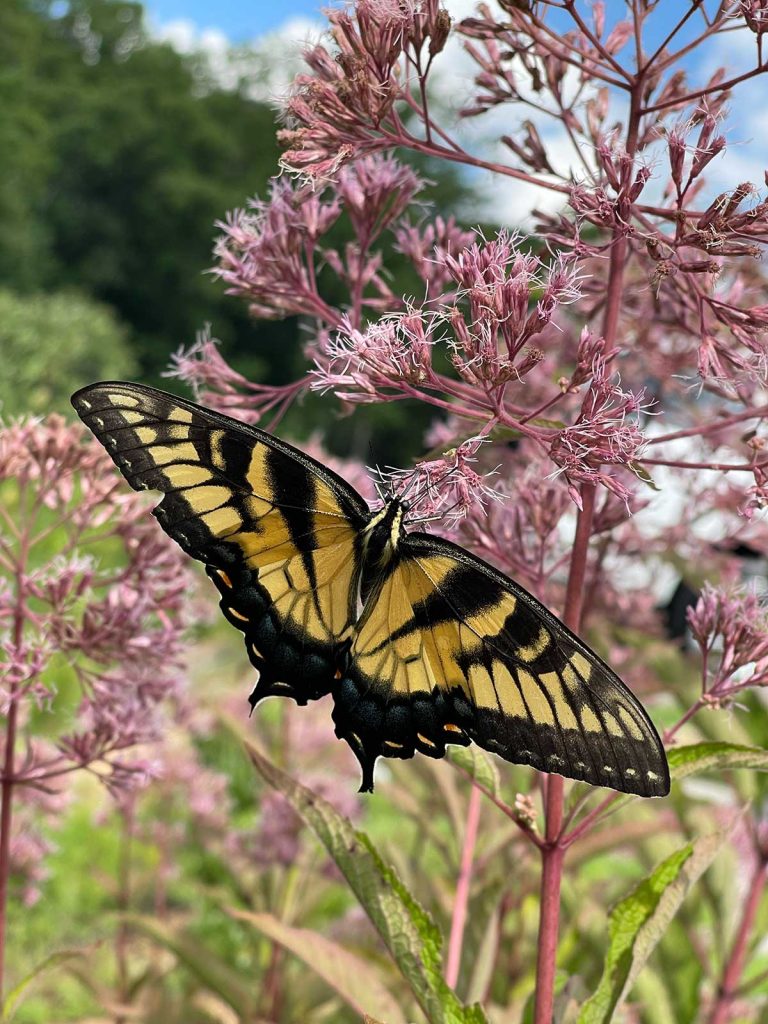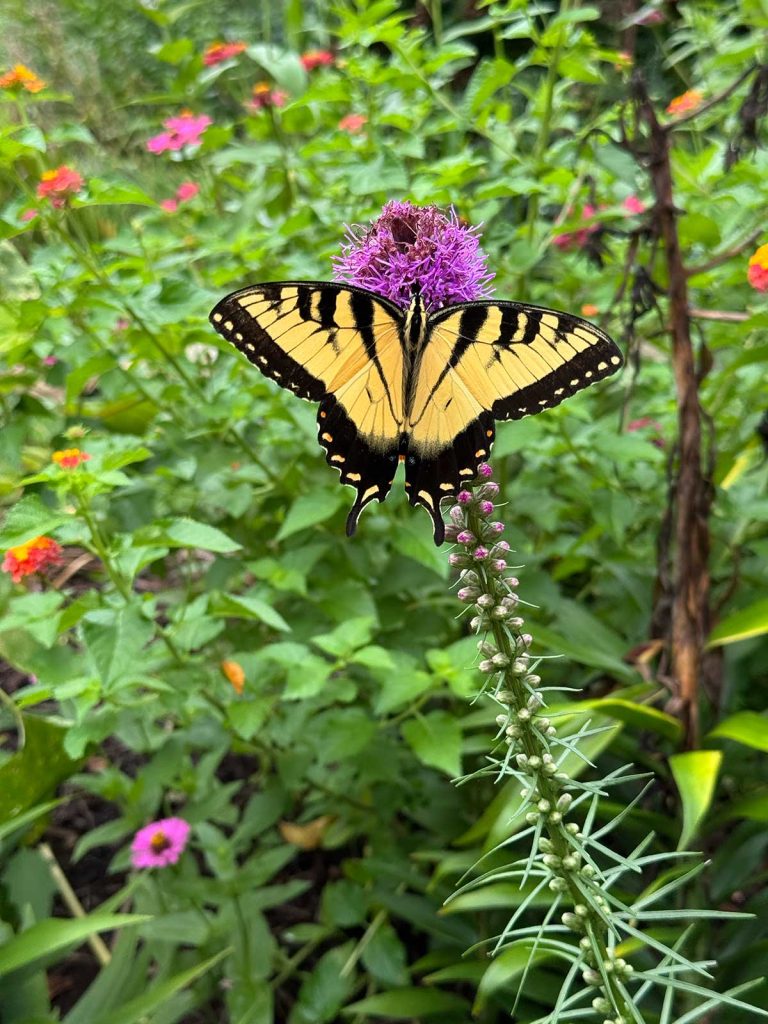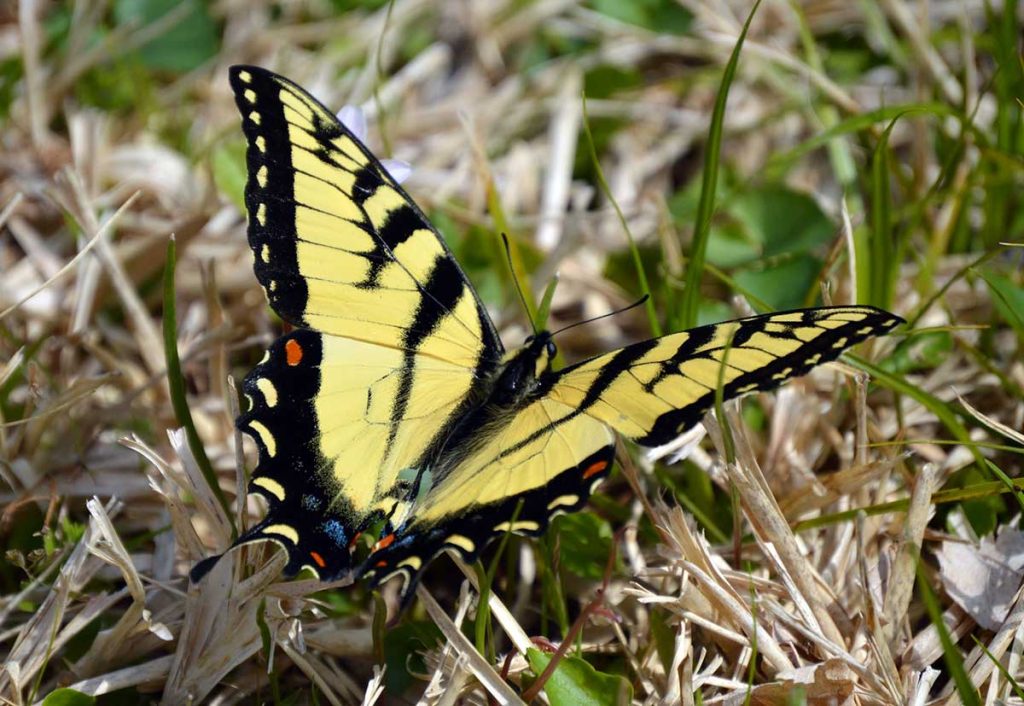Summary
The eastern tiger swallowtail (Papilio glaucus) is a common butterfly that can be seen feeding on flowers in pollinator gardens such as verbena, lantana, coneflower, and phlox. The males and females have large, bright yellow wings with black stripes at the top. Females also have a dark phase where they appear dark brown or black. Adult butterflies live up to two weeks.
Our pollinator garden attracts dozens of eastern tiger swallowtail (Papilio glaucus) butterflies each year. They find water, nectar, and a great place to rest among the Mexican sunflowers, zinnias, lantana, and other flowers. In the summer and fall, they seem to prefer feeding on the Mexican sunflowers in my garden. I often see multiple swallowtails clustering on these flowers.
About Eastern Tiger Swallowtails
You’ll find these beautiful butterflies in the eastern United States. It’s likely the most well-known butterfly in the Southeast. It has a large wingspan of between 3 and 5 inches, which really gets your attention.
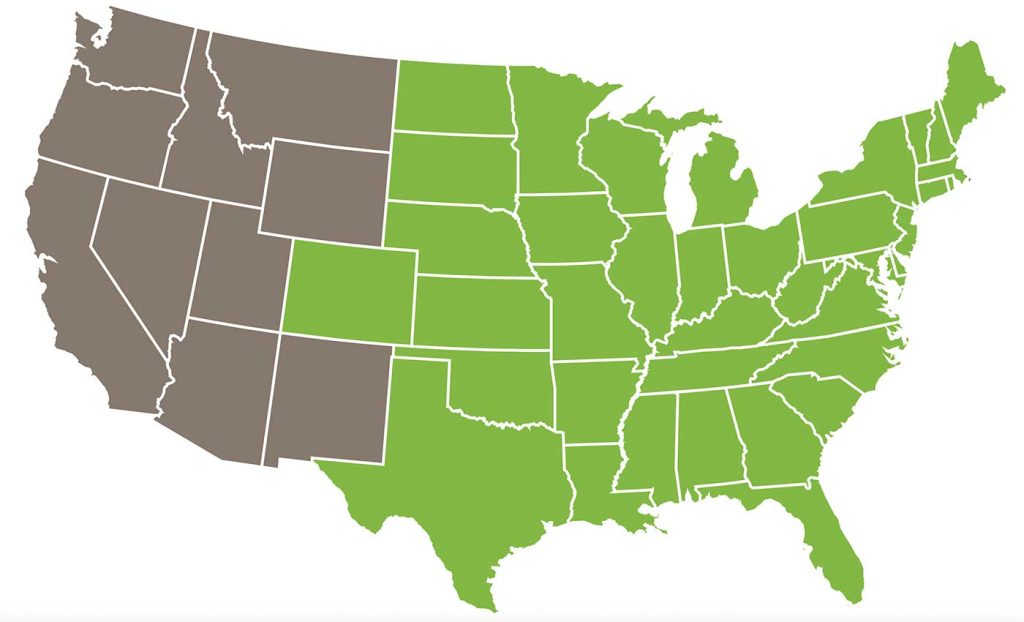
Appearance
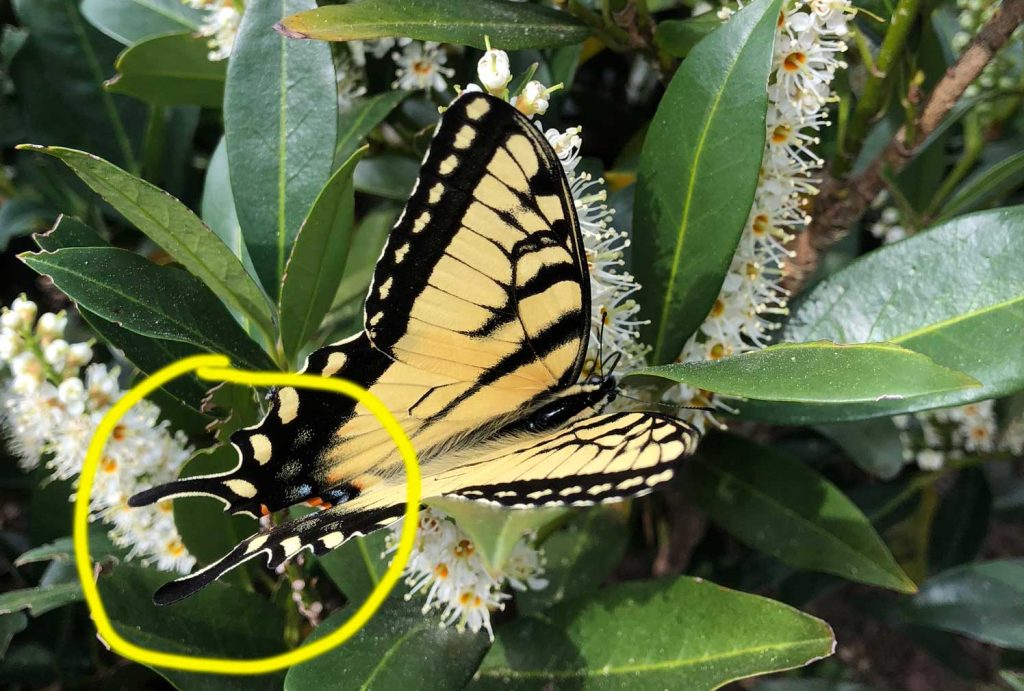
There is a lobe at the bottom of the wing that extends further than the rest of the wing. To me, this is the tell-tale identifier of a swallowtail butterfly. Many people refer to this part of the wing as the ‘tail’ of the butterfly.
Those who named these butterflies thought that the tail of the butterfly resembled that of swallows (a family of birds that have a long tail). Thus, they were named swallowtails (Source: Cornell Cooperative Extension).
The tails on their wings are used to escape predators. Birds may think the tail is the head of the butterfly and attack it, thus allowing the butterfly to escape (perhaps without its tail) (Source: Meijer Gardens).
Males
The males are yellow and have four black stripes at the top of each forewing. These are the ‘tiger stripes’. Females are larger than the males.
Females
Female eastern tiger swallowtail butterflies can appear in two different colors or phases (called dimorphic). In the yellow phase, the female has bright yellow wings with bold, vertical black stripes, just like the male butterfly. However, the female has iridescent blue coloration along the edges of its hindwings. On the underside, a row of yellow spots runs across the forewing, and a distinctive orange spot is present on the hindwing.
The dark phase of the female butterfly has black wings but the iridescent blue color is still present along the edge of its hindwings. The wings also have a row of yellow spots on the forewings, extending into the hindwings and an orange spot on its hindwings.


The dark phase of the female mimics the pipevine swallowtail, which is poisonous. Thus, the mimicry provides the females with some protection from predators. This is called mimicry.
Oddly enough, this species can produce a butterfly that is both male and female, showing half of its wings with male coloration and the other half with female coloration. This is called gynandromorphism (Source: inaturalist.org).
Habitat
These butterflies are generalists and can be found in a wide range of habitats, including hardwood forests, rivers, roadsides, and backyard gardens. They feed on many different plants and have a larger range of host plants (Source: iNaturalist.org).
What Flowers do Eastern Tiger Swallowtails Feed on?
If you want to attract eastern tiger swallowtail butterflies to your garden, they need to be able to feed on nectar. Here are some flowers to include in your garden for food:

Mexican sunflower
Tithonia rotundifolia
Blooms in mid-summer to fall
Annual

Creeping Phlox
Phlox subulata
Blooms in early spring
Perennial

Joe Pye Weed
Eutrochium spp.
Blooms July – Sept.
Perennial

Purple coneflower
Echinacea purpurea
Blooms in mid-summer to fall
Perennial
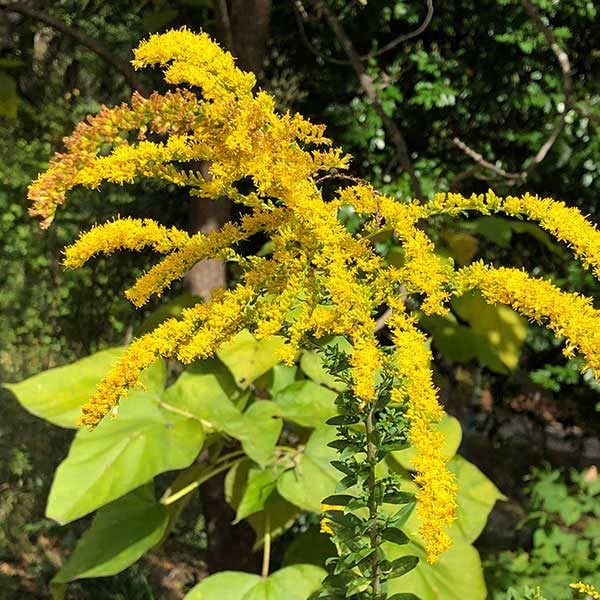
Goldenrod
Solidago spp.
Blooms in summer to late fall
Perennial
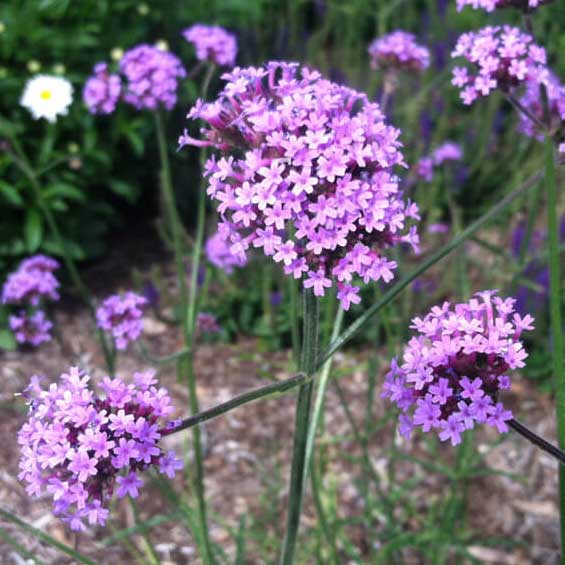
Verbena
Verbena spp.
Blooms late spring to late fall
Perennial
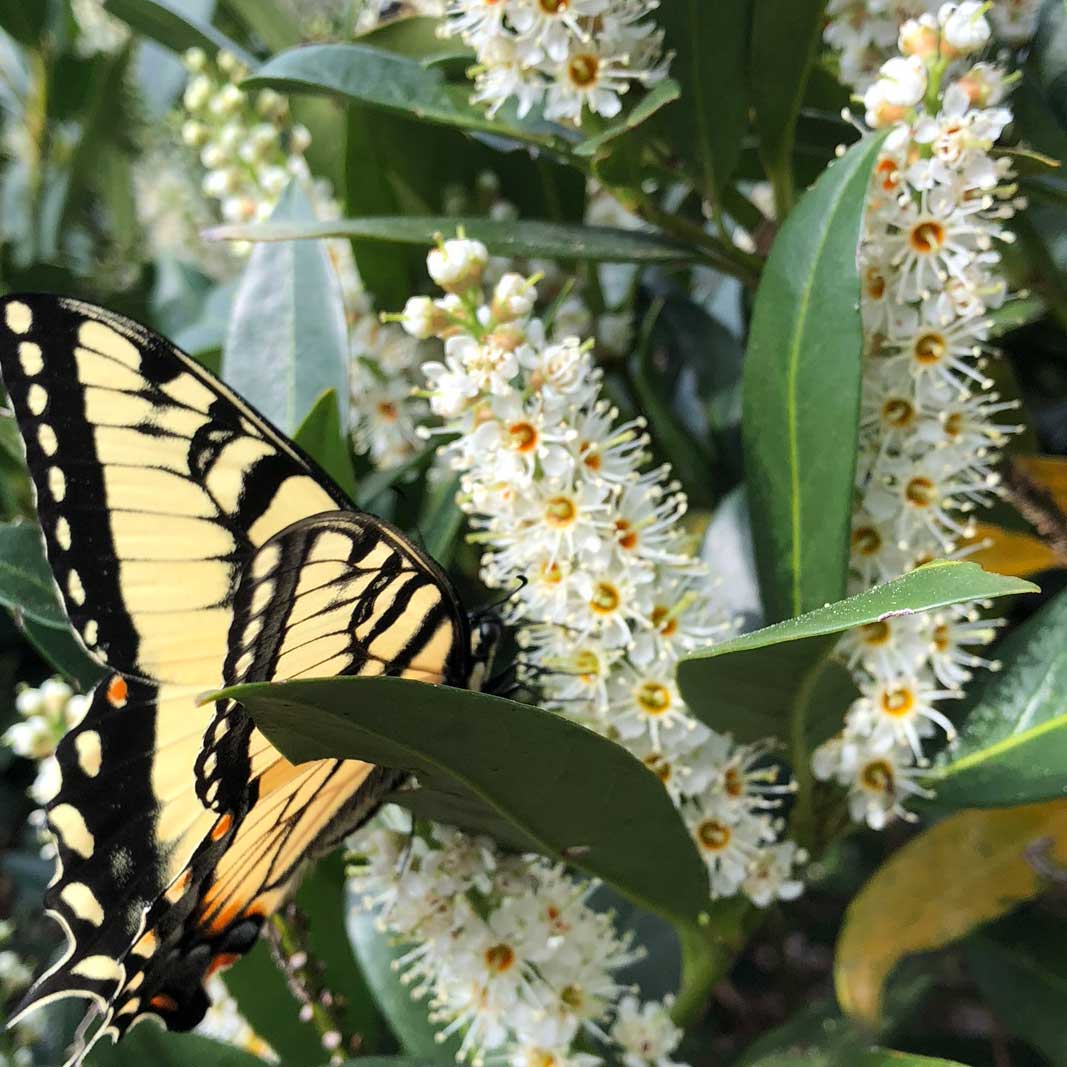
Cherry laurel
Prunus laurocerasus
Blooms in spring
Perennial
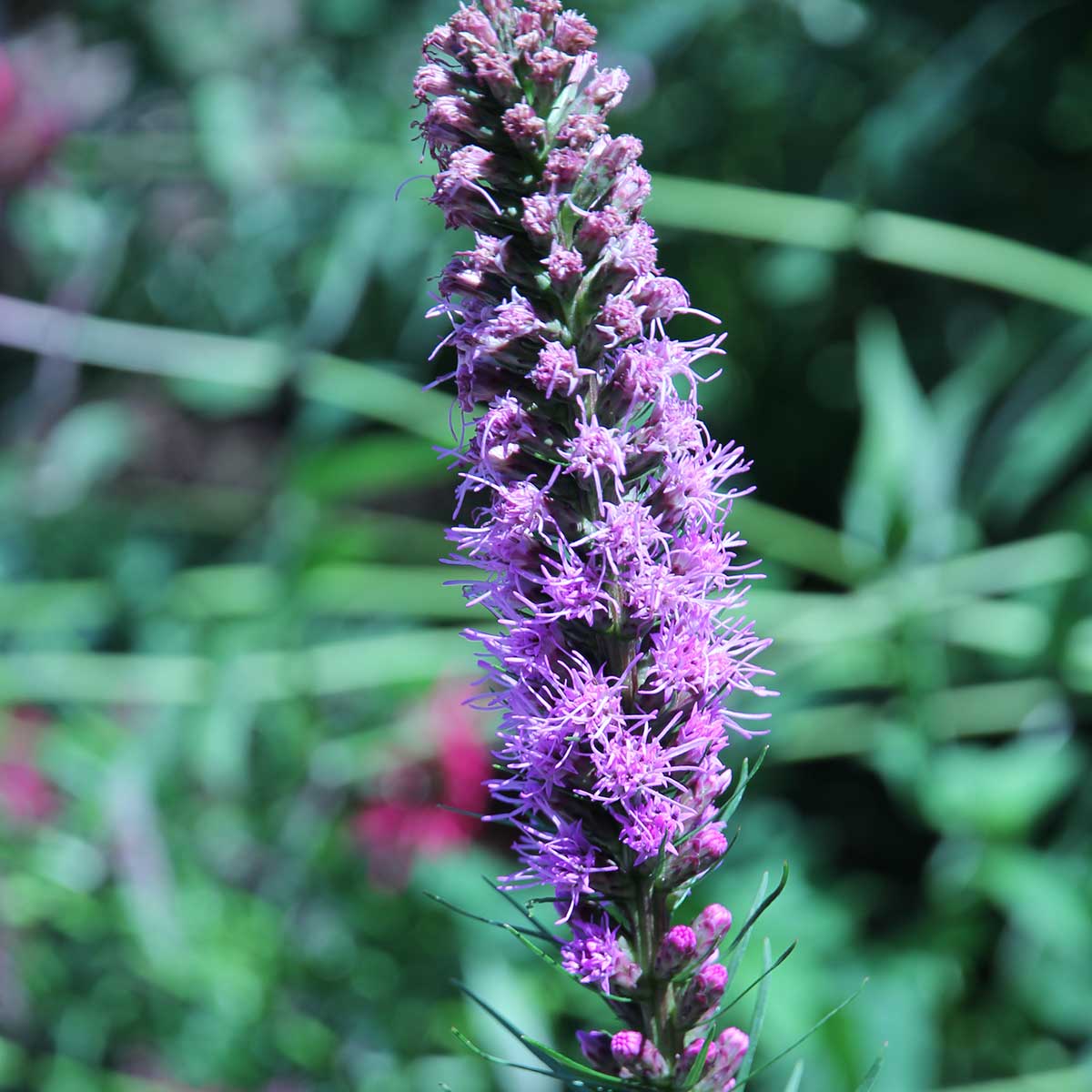
Blazing star
Liatris spicata
Blooms June to Sept.
Perennial
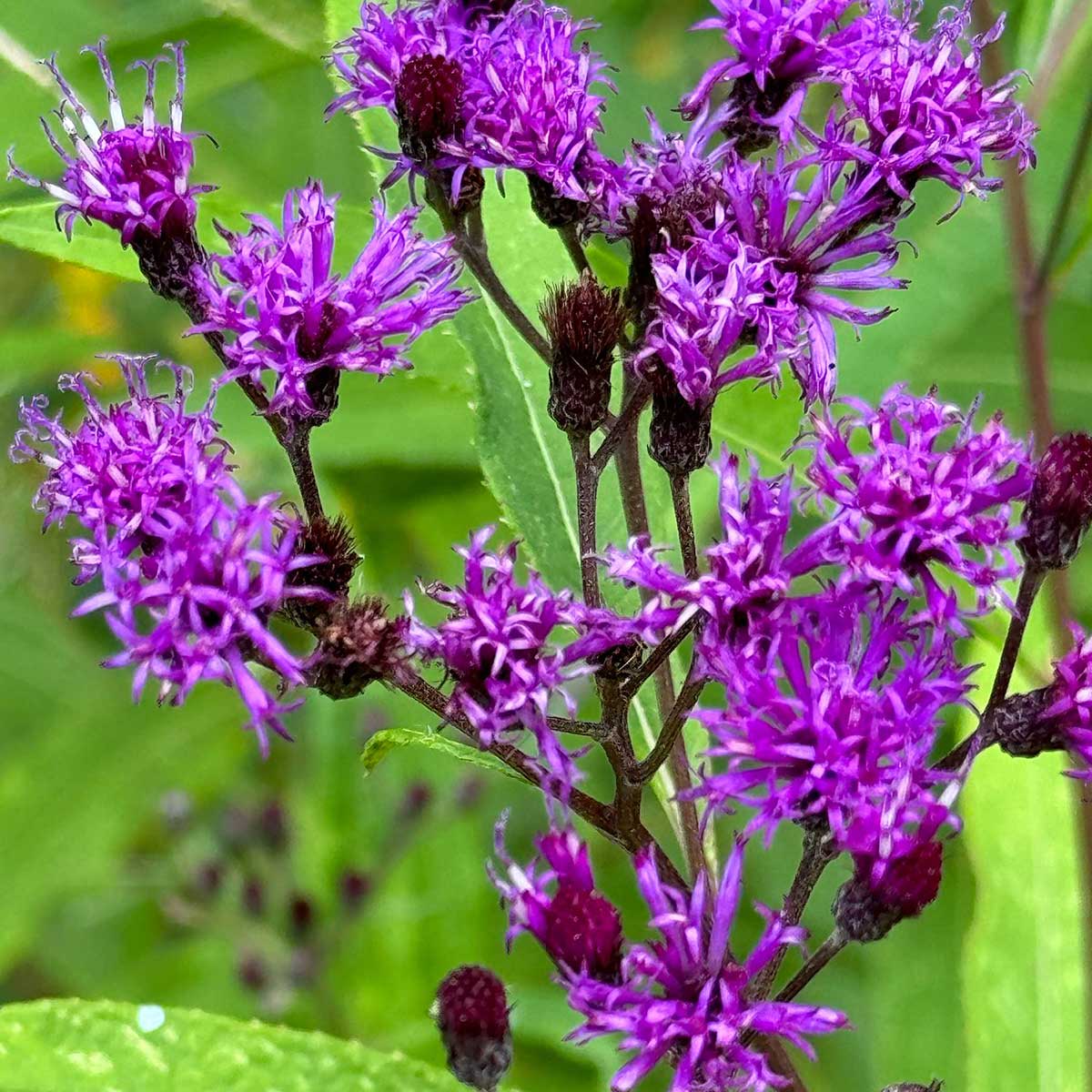
Ironweed
Vernonia spp.
Blooms late summer to fall
Perennial

Eastern tiger swallowtails also have a behavior called puddling, which is how they absorb specific nutrients from damp soil or decaying materials.
Plants Necessary For Eastern Tiger Swallowtail Caterpillars: Host Plants
This butterfly species has a larger choice of host plants than many others. Host plants include:
- wild cherry (Prunus serotina)
- American basswood (Tilia americana)
- birch (Betula spp.)
- ash trees (Fraxinus spp.)
- cottonwood (Populus spp.)
- willows (Salix spp.)
- Sweet bay magnolia (Magnolia virginiana)
- Tulip tree (Liriodendron tulipifera)
- Fringetree (Chionanthus virginicus)
- Sassafras (Sassafras albidum)
Life Cycle
The adult butterflies can live for one to two weeks. When they mate, the female lays eggs on the leaves of their host plants. The egg hatches after 4 to 10 days (Source: inaturalist.org). The initial stage of the caterpillar is brown but it will eventually molt to become green with two black, yellow, and blue eyespots on its thorax. These larval stages have five instars. Just before it enters the chrysalis, the caterpillar becomes dark brown.
The chrysalis of eastern tiger swallowtails is brown, making it blend well with the color of wood, leaf litter, or tree bark. The caterpillar will stay in the chrysalis from 9 to 11 days, but it may overwinter in leaf litter during cold winters.
Caterpillar Mimicry
Before the caterpillar molts and turns green, the first three instars are brown with coloration to make them appear like bird droppings. Later on, the caterpillar develops eyespots on its thorax that help deter birds.
These caterpillars also have an osmeterium, which is an orange organ that can be extended outwards when the larva is threatened. This organ emits a foul odor that can repel predators.

